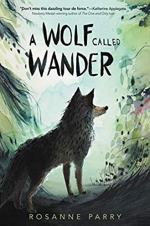
|
| Name: _________________________ | Period: ___________________ |
This test consists of 15 multiple choice questions and 5 short answer questions.
Multiple Choice Questions
1. What body of water does Wander encounter to save him from the fire in "Run"?
(a) The ocean.
(b) A creek.
(c) A lake.
(d) A river.
2. How do wolves help ravens feed?
(a) By finding food.
(b) By ripping into the hide of the animal.
(c) By killing fish.
(d) By regurgitating food for the birds.
3. For how long have pronghorns lived in North America?
(a) 5 million years.
(b) 10 million years.
(c) 50 million years.
(d) 20 million years.
4. How many wolves are there in the average pack?
(a) 10-15.
(b) 15-20.
(c) 5-8.
(d) 20-25.
5. What do the pale green clumps of sagebrush give way to as Wander makes his way up the mountain in "Mountain"?
(a) Junipers.
(b) Honeysuckle.
(c) Ferns.
(d) Redwoods.
6. What do the horses not have to send up an alarm about the cougar, according to the narrator in "Hunt"?
(a) Ravens.
(b) Chipmunks.
(c) Starlings.
(d) Squirrels.
7. The Zumwalt Prairie is the last of what type of prairies in North America?
(a) Native bunch grass prairies.
(b) Native daisy prairies.
(c) Ponderosa pine prairies.
(d) High desert prairies.
8. When was the picture from the trail camera taken of OR-7 that appears in "The Real Wolf Behind the Story"?
(a) June 2014.
(b) May 2013.
(c) August 2013.
(d) May 2014.
9. What is the elevation of the Zumwalt Prairie?
(a) 0-500 feet.
(b) 3,500-5,500 feet.
(c) 2,000-3,000 feet.
(d) 1,550-4,000 feet.
10. According to the information in "Wolf Tracks," only what animals's print is larger than a wolf's?
(a) A horse's.
(b) A bear's.
(c) An alligator's.
(d) A cougar's.
11. What stands next to Wander in the water as the animals escape the fire in "Run"?
(a) A wolf.
(b) A coyote.
(c) A fox.
(d) A buck.
12. How do wolves mark territory?
(a) With paw prints.
(b) With regular placement of urine.
(c) With netted thornbushes.
(d) With regular placement of vomit.
13. What does Wander do to warn the horses of the cougar in "Hunt"?
(a) He gives a sharp bark.
(b) He charges the horses.
(c) He splashes in water.
(d) He gives a deep howl.
14. When was the Malheur National Wildlife Refuge created?
(a) 1889.
(b) 1908.
(c) 1885.
(d) 1915.
15. Why does Wander not return to the charred side of the water to look for the female wolf in "Howl"?
(a) The woods are still burning.
(b) He cannot track her in snow.
(c) It is raining too hard.
(d) He cannot track her in ash.
Short Answer Questions
1. Who mocked Wander for days after he ate a frog?
2. What color are the eyes of sandhill cranes?
3. Who dared Wander to eat a frog once?
4. What color is the female wolf when Wander finds her in "Pack"?
5. Where was OR-7 born?
|
This section contains 423 words (approx. 2 pages at 300 words per page) |

|




